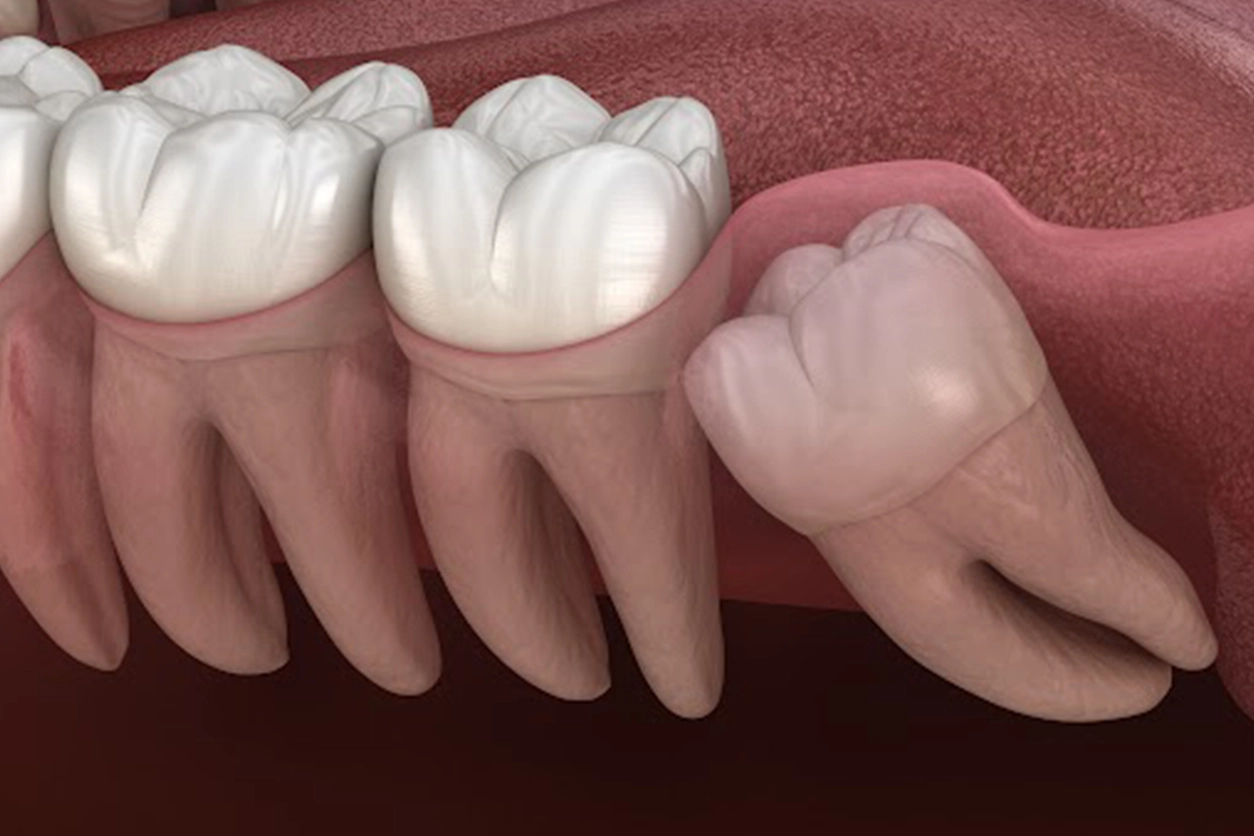The wisdom teeth, also known as the third molars, are the four teeth located at the back of the jaw. These are the last to erupt, typically coming in during the late teens or early 20s. This process can be painful for a variety of reasons. Sometimes, the pain will resolve on its own, but other times it requires active pain management and many times, removal.
In this article, we’ll explain why growing wisdom teeth is so painful, as well as some options for relieving wisdom teeth pain.
There are several reasons why growing wisdom teeth can be painful, including:
Just as when you were younger, the feeling of the tooth pushing through the gum can be painful. The eruption of the tooth causes inflammation and swelling of the jawbone, which puts pressure on the nerves.
Additionally, most of the time, there is no room for wisdom teeth in a person’s mouth. This typically causes the wisdom teeth to push through at an angle, causing other teeth to shift and increasing your risk of tooth decay.
On the other hand, in some cases, teeth don’t come through fully. This is known as impacted teeth and leaves the gums vulnerable to issues including:
There are several ways that you can relieve wisdom tooth pain at home, including:
An ice pack can be used to reduce pain and inflammation because it offers a numbing effect. Try holding an ice pack against the jaw for up to 15 minutes at a time, with 15 minutes of rest between cycles.
Some research indicates that, thanks to its numbing effect, cloves and clove oil offer promise as a topical pain reliever. You can apply clove oil to a cotton ball and place it directly on the affected tooth, or you can place a whole clove near the affected tooth and bite down without chewing. Hold it there until the pain begins to subside and then spit it out.
According to research, aloe vera is full of antioxidants. Additionally, it offers anti-inflammatory properties and can be used to soothe/reduce inflammation due to the teeth breaking through the gums. Simply apply the aloe vera gel directly to the gums to cool the area and temporarily relieve the pain.
Menthol is a compound found in peppermint leaves. It offers a natural cooling effect, which has been proven to provide pain relief. While there is no definitive proof that it relieves wisdom tooth pain, it has been proven safe.
Soak a cotton ball in peppermint extract and place it near the affected tooth. Another option is to apply the peppermint oil directly to the affected tooth or rinse with peppermint tea after it cools down.
A saltwater rinse is effective for relieving wisdom tooth pain for most people. Research shows that salt is a natural disinfectant and the rinsing motion can loosen food particles/debris that may be lodged between teeth, as well as eliminate bacteria.
In addition, saltwater has been proven to reduce inflammation and promote healing. Simply combine 1/2 teaspoon of salt into a glass of warm water.
Cucumber slices are a refreshing way to relieve wisdom tooth pain. Simply cut small slices of cucumbers and place them in the fridge. When your tooth starts hurting, simply place a slice directly on the tooth. The coolness will ease the pain and offer some comfort.
The active ingredient in most numbing gels is benzocaine. Research indicates that these gels can reduce feeling in the gums, which dulls the pain. However, these often have to be applied frequently throughout the day. Some people cannot use this remedy because they are allergic to benzocaine.
Ibuprofen is an OTC pain reliever that has been proven to reduce inflammation. Make sure to follow the dosage instructions on the package. This is an effective option for managing pain until you can get to the dentist.
For most people, the above remedies are temporary. While tooth extraction is typically discouraged due to the additional oral health complications it can bring, evolution has made wisdom teeth unnecessary. Therefore, if your wisdom teeth are causing you pain or other problems, your dentist will likely recommend extraction.
If the teeth are fully erupted, a simple extraction may be possible. However, in most cases, the teeth will need to be surgically removed. Once the teeth have been removed, you should have no more pain. However, it's important to take proper care of the extraction site to avoid infection.
Proper care includes brushing with a soft-bristled toothbrush, taking extra care around the extraction site, flossing, and using mouthwash to eliminate bacteria and food debris stuck between teeth. Make sure to call your dentist if you have any questions, concerns, or complications.










